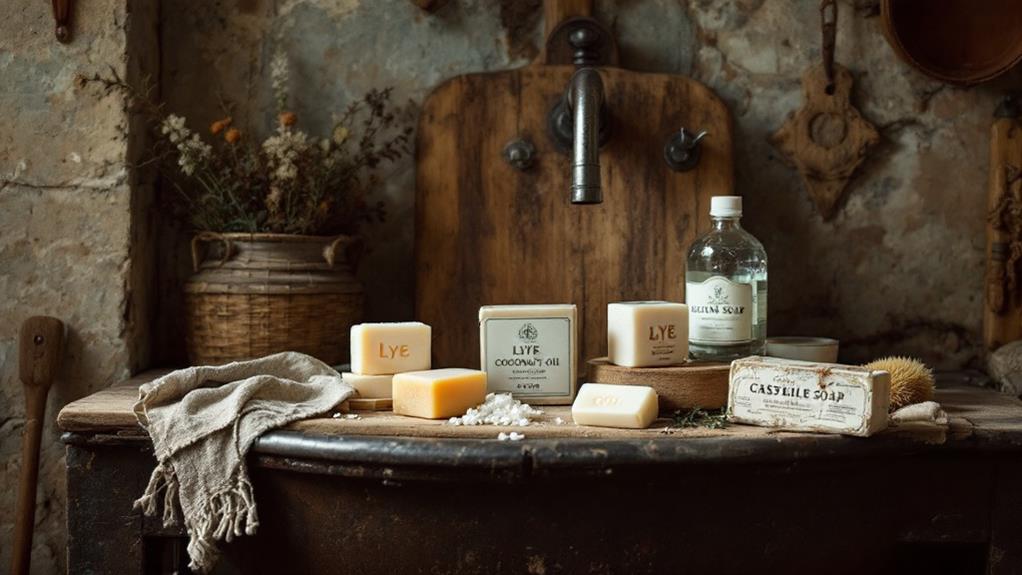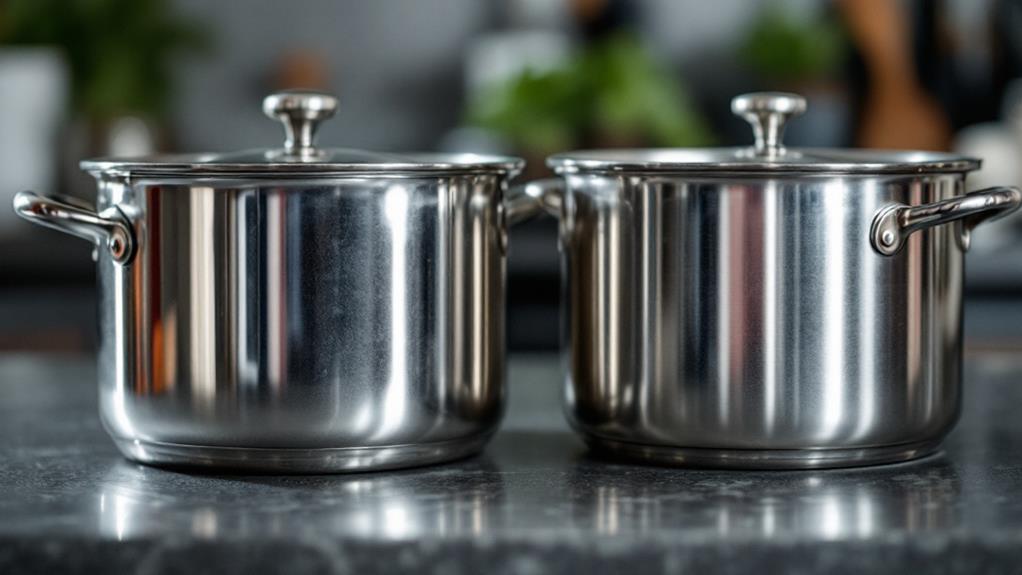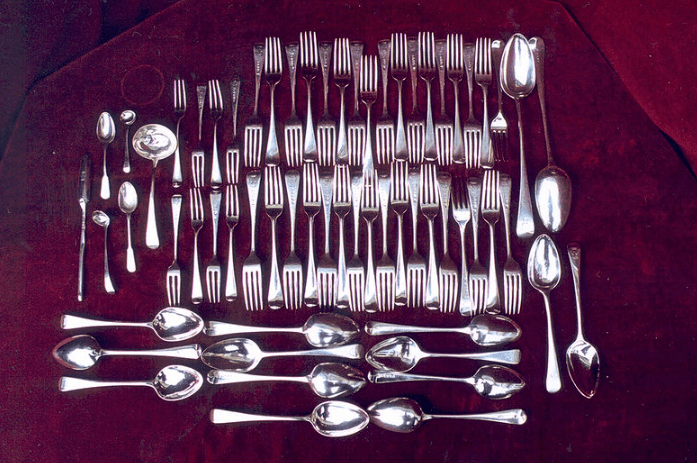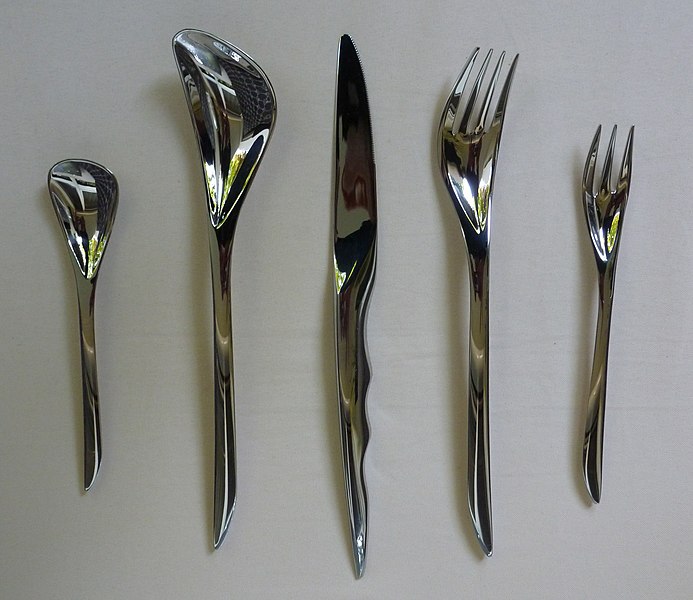What Is Fancy Silverware Made Of?
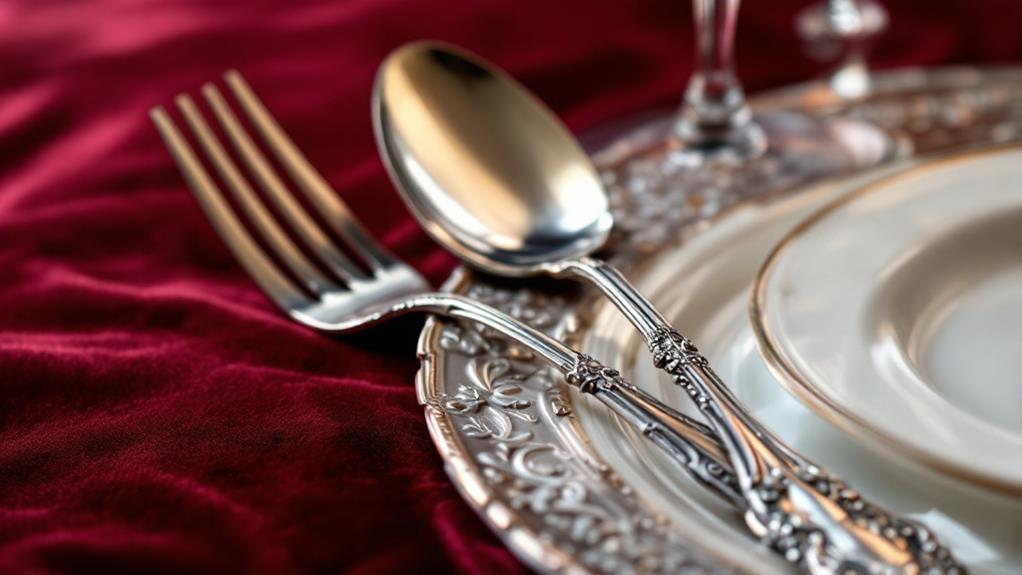
Fancy silverware is typically crafted from sterling silver, a high-quality alloy containing 92.5% pure silver and 7.5% copper. You'll also find silver-plated flatware, which features a thin layer of silver over a base metal like stainless steel. For ultra-luxurious pieces, artisans may incorporate gold, platinum, or even gemstones. The hallmark of fancy silverware lies in its intricate designs, detailed engravings, and superior craftsmanship. Look for markings like "Sterling" or "925" to guarantee authenticity. Proper care and maintenance are essential to preserve the beauty and value of your silverware. Uncovering the nuances of these refined dining pieces can enhance your appreciation for the art of fine dining.
Materials Used in Fancy Silverware
When you're admiring fancy silverware, you're likely looking at pieces made from sterling silver. This luxurious alloy consists of 92.5% pure silver and 7.5% copper, giving it both beauty and durability. However, not all fancy silverware is created equal. You'll find silver-plated options that feature a thin layer of silver over a base metal, typically stainless steel or nickel silver. These pieces mimic the appearance of sterling silver at a more affordable price point.
For those seeking the ultimate in luxury, some high-end silverware incorporates additional precious metals like gold or platinum into their designs. You might even come across specialty pieces crafted from solid silver or adorned with decorative elements such as enamel, crystal, or gemstones.
If you're a fan of antique silverware, you'll notice more intricate designs and manufacturing techniques compared to modern mass-produced flatware. These vintage pieces often showcase the craftsmanship of a bygone era. Whether you're looking for contemporary elegance or timeless charm, fancy silverware offers a range of materials and styles to suit your taste and budget.
Sterling Silver vs. Silver-Plated Flatware
The choice between sterling silver and silver-plated flatware often comes down to personal preference and budget. Sterling silver, composed of 92.5% pure silver and 7.5% other metals, offers superior quality and durability. It's more precious and develops a desirable patina over time. However, it comes with a higher price tag.
Silver-plated flatware provides a more affordable alternative. It features a thin layer of silver over a base metal, typically stainless steel or brass. This option gives you the appearance of silver without the hefty cost. However, the plating can wear off over time, exposing the underlying metal.
When considering durability, sterling silver has the upper hand. It's more resistant to wear and tear, making it a long-lasting investment. Silver-plated flatware, while initially attractive, may tarnish and lose its luster more quickly.
Both types require proper care and maintenance. Regular polishing helps preserve their appearance and quality. With sterling silver, you'll enjoy a natural patina that many find appealing. Silver-plated flatware, on the other hand, may need more frequent attention to maintain its shine and prevent tarnishing.
Hallmarks and Quality Indicators
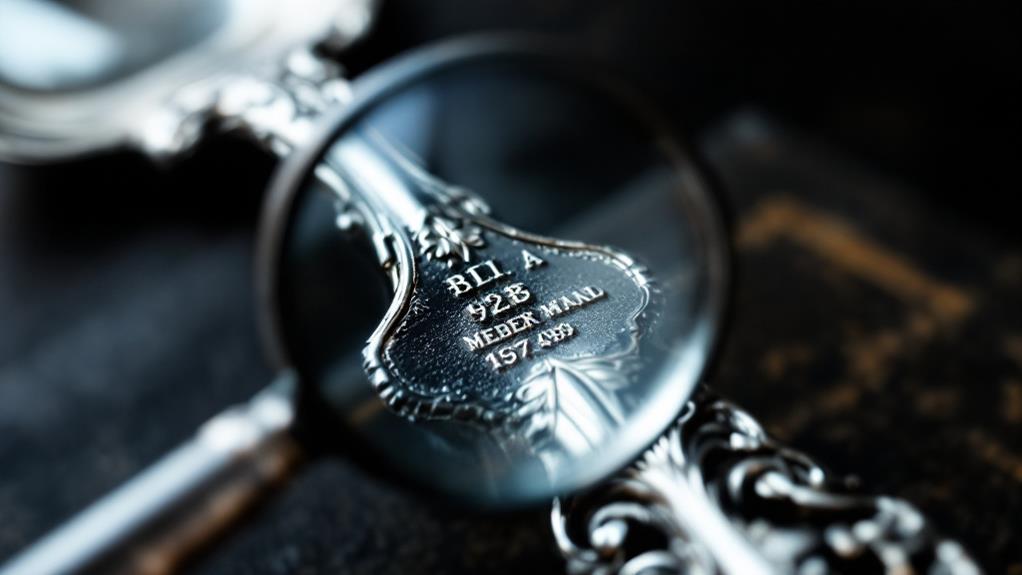
Identifying genuine sterling silver flatware requires a keen eye for hallmarks and quality indicators. When examining your silverware, look for markings like "Sterling" or "925," which signify 92.5% pure silver content. Foreign-made sterling silver may bear different hallmarks, such as the Lion Passant, Gorham Silver mark, or "800" or "Coin" markings. These indicators help distinguish real silver from silver-plated or stainless steel flatware.
Be cautious of markings like "International Silver," "Silver Co.," or "Silver-Plated," as these suggest the flatware isn't genuine sterling silver. While learning all potential hallmarks can be challenging, it's essential for determining the quality and durability of your silverware. To ascertain accuracy, consider seeking professional evaluation. An expert can test your flatware using nitric acid, providing the most reliable confirmation of its authenticity.
Understanding the materials used in your silverware enhances your dining experience and helps you make informed decisions about your collection. Whether you're looking to invest in sterling silver flatware or simply curious about your current set, recognizing these hallmarks and quality indicators will guide you in appreciating the true value of your dining pieces.
Craftsmanship and Design Elements
Craftsmanship and design elements set fancy silverware apart from ordinary utensils. When you're looking at sterling silverware, you'll notice intricate patterns and detailed engravings that showcase the metalsmith's skill. These designs aren't just for show; they contribute to the overall quality and durability of the pieces.
Fancy silverware offers a wide range of styles to suit different tastes and occasions:
- Glossy, mirror-like finishes for formal dining
- Matte finish options for a more contemporary look
- Specialized pieces like serving spoons and butter knives for sophisticated presentation
The weight and balance of premium silverware enhance your dining experience, making it well worth the investment. While stainless steel is more common, sterling silverware (92.5% pure silver) offers a luxurious feel that's hard to match.
When storing your flatware, use anti-tarnish strips to maintain its luster. With proper care, your fancy silverware can last for generations, becoming a cherished family heirloom. Whether you prefer ornate designs or sleek, modern styles, there's a set of fancy silverware that'll refine your dining experience and impress your guests.
Care and Maintenance Tips
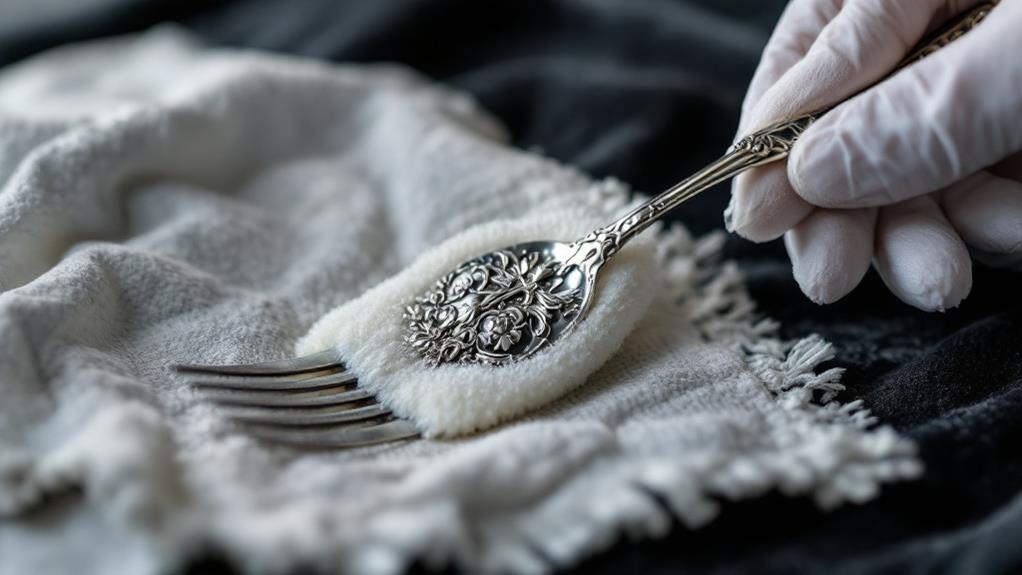
Regularly maintaining your fancy silverware is essential for preserving its beauty and value. When it comes to real sterling silver flatware, proper care and maintenance are pivotal to keep it looking its best. To clean your silver pieces, avoid using abrasive materials or harsh cleaners that can scratch the delicate surface. Instead, opt for specialized silver cleaning solutions or a soft polishing cloth to safely restore their shine.
After cleaning, it's important to store your silverware correctly. Keep your pieces in a cool, dry place away from air and moisture to minimize tarnish buildup. Proper storage will help maintain the lustrous appearance of your silver flatware and prevent unnecessary wear.
For routine maintenance, use a silver polishing cloth to gently buff your pieces. If you notice significant tarnishing, you can dip the silverware in a mild silver cleaning solution. Remember that stainless steel flatware requires different care than sterling silver, so always check the materials of your silverware before applying any cleaning methods. By following these care and maintenance tips, you'll guarantee that your fancy silverware retains its beauty and value for years to come.
Choosing the Right Silverware Set
When it comes to choosing the right silverware set, you'll want to ponder several key factors. Typically, fancy silverware is made from sterling silver, an alloy containing 92.5% pure silver. This high-quality material guarantees your Cutlery Set will have a lustrous appearance and superior quality compared to other flatware sets.
Consider these essential aspects when selecting your flatware set:
- Number of place settings and serving pieces
- Pattern style and design elements
- Overall quality and craftsmanship
While flatware is usually made from various materials, sterling silver stands out for its elegance and durability. Look for sets featuring intricate engravings and hand-finished details, as these add to the visual appeal and exclusivity of your silverware.

